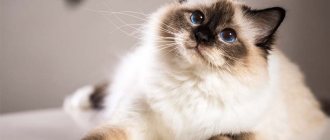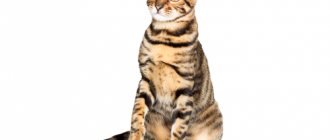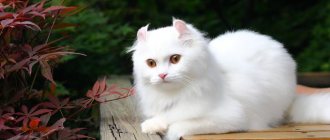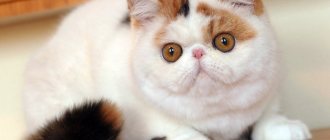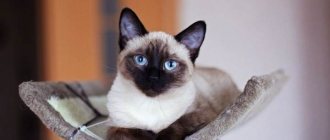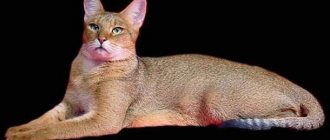Features of a healthy diet
Basic Rules
The daily diet of the Serengeti should be balanced, nutritious, enriched with various vitamins, minerals, macro- and microelements.
When compiling it, follow the simplest tips. Feed young kittens exclusively warm food. Cold food negatively affects the digestion process, while excessively hot food causes a burn to the mucous membrane of the esophagus and stomach. The number of meals up to 6 months is on average 5-6 times a day in small portions of 100-150 g
At an older age, reduce their number to 3-4 times a day: 200-300 grams in the morning, afternoon and evening. Pay special attention to drinking plenty of water: change the water daily, after washing the bowl with laundry soap. A kitten's diet (especially during adolescence) should contain a sufficient amount of protein products. Introduce turkey, chicken, and rabbit fillets to the menu. Do not mix dry food and natural food to avoid heaviness and intestinal obstruction. Determine a special (one) place for feeding, do not move the bowl around the house.
Dry food
Modern dry food comes in the form of granules. They contain all the necessary macro- and microelements, vitamins, minerals necessary for the proper physical and mental development of the animal. The most popular:
- Purina One;
- Kitekat;
- Friskies;
- Perfect Fit;
- Darling;
- Royal Canin;
- Felix;
- Brit Care;
- Dr.Clauders.
Canned food
Canned food is a common commercially prepared cat food option. This product is available in the following variations:
- mousse - often used for the first feeding of kittens; the ingredients included in its composition are highly ground and have an airy texture;
- pate – has a denser consistency, the components are ground until smooth;
- chopped meat - finely chopped pieces of turkey, chicken, rabbit, veal;
- stew - made from fish, offal and meat fillet, filled with sauce or jelly-like gravy.
Canned products are packaged in soft bags, tin and glass jars. The most popular brands:
- Pro Plan;
- Felix;
- Country delicacies;
- Sheba Pleasure;
- Hill's Science Plan;
- Royal Canin.
Treats
Healthy treats for cats are meat protein enriched with vitamins and minerals, available in the form of:
- dried pieces of meat or fish, cream soups and puddings - used as treats and praise during training;
- crispy pads, sticks - used to remove hairballs from the stomach;
- vitamin granules – prescribed on the recommendation of a doctor to replenish the required amount of minerals in the animal’s body.
The most widespread are:
- Dreamies;
- Beaphar;
- Edel Cat;
- Mnyams;
- Country delicacies;
- Happy Cat.
Natural products
For healthy growth and normal functioning, introduce natural food into the Serengeti diet. The most useful and safest are:
- lean meats - veal, turkey, chicken, rabbit;
- offal – chicken and beef liver, stomachs, hearts, kidneys;
- sea fish - salmon fillet, trout, salmon;
- dairy products - fermented baked milk, sour cream, kefir, natural yogurt, boiled cow's milk, cottage cheese;
- chicken eggs;
- hard and curd cheese;
- vegetables - broccoli, cauliflower, zucchini, pumpkin, Brussels sprouts (boiled or stewed);
- cereals – oatmeal, buckwheat, rice, millet;
Forbidden food
Exclude the following foods from your pet's menu:
- bakery and confectionery products;
- chocolate, sweets;
- nuts;
- legumes;
- pickles, smoked and spicy foods;
- sausages, frankfurters, sausages, cutlets;
- pork, lamb, cartilage, bones;
- fruits;
- frozen semi-finished products.
Serengeti are amazingly affectionate, loyal and friendly creatures. You have become familiar with the basic rules for caring for and maintaining this breed, as well as the principles of creating a balanced diet. Try to surround your pet with warmth and care from the first day of his stay in your home.
Feed and health
It is recommended to use high quality food, although a natural method of feeding your cat is also suitable. However, too soft food is fraught with the appearance of tartar.
On average, the Serengeti lives 12-15 years, remaining active into old age and maintaining leadership qualities. Adults give birth to 3-8 kittens. This amount of offspring is quite rare for purebred species.
Interesting facts about the Serengeti
The most accurate word that expresses the character of the Serengeti breed is eccentricity; these animals are very inquisitive and have a perky disposition. Before you bring home a Serengeti, it is worth getting to know this breed better.
- Experts do not recommend having a Serengeti in a family with small children.
- When a Serengeti couple has kittens, they become exemplary parents. They are happy to teach their kittens to go to the litter box and eat like an adult, immensely caring for their babies.
- Serengeti cats have a special love for walks in the fresh air. Fleeing to the streets is a common occurrence; after several days of absence, fugitives always return home.
- Any objects in the apartment can become a toy for curious cats.
Maintenance and care
There are no nuances in terms of caring for the Serengeti. It does not leave a lot of fur on the floor, and to collect the falling undercoat, it is enough to comb the cat every day with a special massage mitten or brush. Cleanliness allows the cat to independently remove dirt from the eyes and ears. The main thing is to regularly examine your pet for parasites or unusual changes (for example, redness).
To solve the issue of claw care, just buy a scratching post and place it in a visible place. Also, if possible, it is worth equipping the animal with slides, swings, and a cat tree. Otherwise, the cat will find an opportunity to play by jumping from cabinets onto curtains, tables and other things. She loves secluded places where she can rest quietly, and therefore it is often difficult to find her in the house - the Serengeti hides so reliably.
Character traits and level of intelligence
Servals are predators by nature. They may exhibit the unbridled nature of their wild ancestors. To prevent imitation of its relatives from becoming the norm of behavior, the kitten needs to be educated and its behavior corrected from childhood.
You need to talk to your pet a lot, play with it, encourage it, and patiently but persistently point out its misdeeds. Thanks to its intelligence, the kitten will very quickly learn to understand what is “good” and what is “bad”. It is best to play on the floor, where the eyes of the owner and the cat are at the same level. By contacting in this way, it is easier to create an atmosphere of trust and friendship. Games and running should not only be allowed, but also encouraged - the domestic cheetah should be active.
- Let's play!..
Important! Punishment should never be aggressive! You can’t shout, much less hit an animal!
These creatures are endowed with high intelligence, and judging by their habits, the African Serval is half dog: faithful, devoted, and easy to train. He quickly remembers and follows his owner’s commands and likes to walk a lot. Accustomed to a leash since childhood, the domestic predator does not resist it and perceives this accessory absolutely calmly.
A cat living in a family loves to communicate with people, is a devoted and loyal friend, and always looks forward to their return home. And so that she does not get bored alone, does not chew things, shoes, wires from electrical appliances (which is not only damage, but a direct danger to the life of the animal), you need to buy toys for her that can be chewed, fiddled with, nibbled, thrown, caught.
To discourage your pet from an item he likes, treat it with aromatic sprays that are safe for pets, which are sold in pet stores.
Remember! It is impossible for the kitten to perceive the owner’s hands or feet as moving toys. The cat will quickly grow up, its teeth, paws and claws (even if treated) will become stronger. A cat excited by a playful environment may not be able to control its hunter's reflexes.
Jumping, running fast, loving to overcome various obstacles and conquer all kinds of heights, the African Serval cat amazes with its energy, agility and readiness for new records.
Exotics are naturally excellent swimmers; they love swimming and playing in the water. They are not known for their courage - they would rather run away from danger and hide than show aggression.
It is recommended to purchase a bush cat only for owners of a large house or a very spacious apartment, where you can allocate a whole room for the cat, which serves as a playroom, gym and place for relaxation. It must be remembered that this is a large wild cat that requires a lot of space.
You need to make sure that the animal does not jump from a great height, because its leg bones are quite fragile. This is especially true for kittens.
In their natural environment, predators feed on rodents, fish, birds, shrews, and reptiles.
Shrew
The basis of the diet of the domestic serval is meat. It's good when the meat is with bones. The daily intake of this product ranges from 0.5 kg to 1.5 kg, depending on age. The cat is fed 2 times a day with the following foods:
- lean poultry (chicken, turkey, quail), veal, beef;
- quail eggs;
- offal;
- greenery;
- vitamin and mineral supplements containing calcium;
- Fresh and clean water is needed daily.
You can feed ready-made Super-premium food.
Character
Serengeti have a strong charisma. They are sociable, friendly, intelligent, and loyal to their owner.
According to the owners, these cats can jump up to two meters in height and constantly make not only meows, but also sounds reminiscent of chirping and purring. That's why this breed is nicknamed the talkative one.
- What are the benefits of grooming animals?
- Ultrasound of animals. Why is it made?
- Where can I take veterinary courses and what are they for?
Even in infancy, the Serengeti kitten becomes very attached to its owner and does not leave his side. To attract attention, he caresses, jumps into your arms, and looks into your face.
The Serengeti are stubborn and fearless. If these cats like something, it will be very difficult to take it away. The pet will not rest until it receives the desired item. And a fighting character will never allow you to give up.
Regardless of the weight categories and the outcome of the battle, the leader of the Serengeti will bravely rush into battle.
Description of the species
The secretive lifestyle of the black-footed cat limits observation of it in its natural habitat. Scientists make their assumptions about representatives of the species based on observations of animals kept in captivity - but the behavior of a wild cat in nature can differ significantly from its “captive” image.
External data
The weight of the small predator rarely exceeds one and a half kilograms, the average body length is half a meter - the length of the tail is 10–20 centimeters. The black-footed cat has a strong, stocky body, a large round head and huge, very expressive eyes, flickering in the dark with an infernal bright blue light. The animal has excellent vision at night, has sensitive hearing and a keen sense of smell.
In the twilight, the eyes of a wild cat glow with blue light
The main color of the coat can vary from light sand to reddish-brown; against this background there is a “wild” pattern of black spots, sometimes merging into stripes. The camouflage coloring perfectly camouflages the wild African cat, making it invisible to both enemies and prey. The paw pads below are reliably protected by dense fur from the hot desert sands.
The art of camouflage for the black-footed cat is a matter of survival
Character and lifestyle
Wild African cats do not build shelters for themselves - they develop ready-made rabbit holes or even termite mounds. They also occupy the burrows of other animals - porcupines, striders or aardvarks, having previously expelled their previous owners from them or simply eaten them for lunch. In these secluded and well-protected places, predators prefer to sit out during daylight hours, and at dusk they go out hunting, walking up to ten kilometers per day. They tolerate both heat and drought well and can go without water for a long time, getting moisture from food.
During the day, the predator sleeps in a shelter, and at night it goes hunting
The hunting grounds of males can reach fifteen square kilometers, while the territories controlled by females are usually three to four times smaller. Animals regularly mark their borders and jealously protect them from strangers.
A wild African cat jealously guards the boundaries of its possessions
Video: life of a black-footed cat litter in natural conditions
Nutrition
The diet of the black-footed cat is quite diverse - it includes up to fifty different types of prey: rodents, birds, insects, reptiles and amphibians. A brave predator is not afraid of the size of the prey, and she easily decides to attack an animal twice her size. Moreover, such an attack is most often successful.
The black-footed cat has a good appetite and attacks even animals twice its size.
Reproduction
During the period of love games, a cat and a cat, who the rest of the time lead a solitary lifestyle, unite in a pair. In due time - after just over two months - the fruits of love are born. There are most often two kittens in a litter, but in general there are no more than four. The mother raises and raises them independently, without the participation of the second parent.
The black-footed cat is a caring mother who raises kittens on her own
Kittens are milk-fed for up to one and a half months, but the cat begins to treat them to fresh meat quite early. By the age of five months, children reach the dimensions of an adult animal, but for another two to three months they live close to their mother, until they become completely independent. Full sexual maturity of young animals usually occurs by one year or a little earlier.
History of the Serengeti breed
The serval wild cat lives in Africa, which has been attracting cat lovers for many years with its unusual appearance. This animal is the closest relative of lynxes and caracals, but is more similar to a cheetah. Servals are tamed and kept as pets, but with great restrictions, since they remain predators even in a human home.
Serval is a bush cat from Africa that looks like a small cheetah.
Breeders dream of a cat similar to a serval, but more friendly and flexible towards humans. The most famous way - crossing wild animals with domestic ones - was tested several years ago, resulting in the Savannah breed. These cats are expensive and beautiful, but there are too many problems in breeding them. The first generation of male hybrids is mostly sterile, and without the infusion of wild serval blood, after several generations the cats lose their resemblance to predators.
The Savannah breed was developed by crossing Servals with domestic cats.
American breeder Karen Sauzman found another way out. She decided to breed a domestic cat similar to the serval, using not predators, but already existing purebred cats. In this case, the phenotype (appearance) of the serval should serve as a guide, especially such features as the length of the paws, the size of the ears, coat color and much more. For this, from her point of view, the Bengal and Oriental Shorthair breeds were suitable. Bengals were expected to have solid weight and bright colors, while Oriental Shorthairs were expected to share their long legs, large ears, and overall delicacy. The spotted color of both cats also came in handy. In subsequent generations, Maine Coon and Abyssinian breeds were also used. In 1994, the first Serengeti were born. The word Serengeti itself refers to a protected area in Tanzania where servals and many other wild animals live. This is the name Karen took for her new breed.
Serengeti is a savannah national park in Tanzania, home to a huge number of African animals.
Serengeti cats turned out to be really similar to servals, without having wild serval blood. The breed is quite young, considered experimental, and has official status only in the international association TICA. However, she cannot take part in exhibitions, because, according to the requirements of felinological organizations, at least 50 nurseries must be organized for this, and so far there are much fewer of them. Work on the Serengeti is still ongoing, crossing with other breeds is allowed.
What does a typical breed look like?
The Serengeti have a large, lean body and an athletic build. The back line is straight, the chest is deep. The limbs are muscular, very strong, with powerful claws. They hold the record for the length of their paws among domestic cats. The length of the tail is equal to the distance between the croup and the shoulder blades; the tail itself is strong and mobile. Weight averages 12 kg. The weight of cats starts from 8 kg, and the weight of cats can reach 15 kg.
The neck is long, muscular, smooth in outline. The head is medium-sized and has an elongated wedge-shaped shape. The profile of the frontal-nasal part of the skull has a straight line, the cheeks are flat. The ears are wide, set high, close and vertical, with rounded tips. Ideal proportions are considered to be equality between the height of the head and the length of the ears. The eyes are round, medium in size, yellow-copper in color, very expressive thanks to the black eyelids. The nose is equally wide throughout its entire length, and the chin is graceful.
Colors:
- black;
- smoky with a spotted pattern;
- tabby based on black, brown and silver shades;
- aka lynx-point - this option is in development and looks like large dark spots on the ivory-colored coat.
The spotted pattern is located chaotically, round and horizontally elongated spots are acceptable. The coat is short and quite soft, the presence of shine is welcome, as long as it does not reduce the contrast of the pattern.
The Serengeti breed meets the standard of the International Cat Association and is included in the TICA list of experimental breeds, but is not yet approved. The selection is far from complete, while some breeders today are working to improve the breed with an emphasis no longer on the external qualities that Karen Sauzman tried to strengthen. In particular, this concerns the size and shape of the ears. The original idea was to breed cats with large, pointed ears, but now the opposite trend is observed.
History of the breed
As you know, African jungles and deserts are not the homeland of the Serengeti; America is considered its homeland. The founder of the breed, Karen Southman, worked in a wild animal reserve in the 90s of the 20th century. The inhabitant of the reserve, a wild cat belonging to the Serval breed, simply charmed Karen. And she decided to repeat all the beauty and charm of a wild cat in a domestic one, but with the condition that the servals should not independently participate in the expansion of the population.
Karen Sauzman decided to crossbreed an Oriental Shorthair cat with a Bengal cat. This decision was not without reason, because four years of in-depth analysis and research work formed the basis of her choice. All these years she carefully selected breeds, all animals were subjected to ultrasound examinations for the presence of diseases. And this work today is priceless, because Serengeti cats are among the most expensive cats in the whole world, and not only due to their number.
On a global scale, this cat breed is not bred en masse; only a few dozen geneticists are known who breed the Serengeti.
Catering
A balanced diet is the key to your pet’s health and good mood. Therefore, decide as quickly as possible what you will feed him: industrial feed or natural food?
It is not recommended to combine one with the other, just as it is not recommended to jump alternately to one or the other.
Natural products
Natural food must be of high quality and fresh, prepared according to the recommendations of veterinarians. The menu should include the following products:
- Meat: veal, beef, rabbit, lamb, poultry (chicken, quail, turkey). It is given raw (after freezing) or boiled (the latter option is worse, since cooking destroys a number of vitamins).
- Porridge: rice, oatmeal, pearl barley, millet, buckwheat, semolina. The porridge is cooked in water (only semolina for babies - in milk), without adding anything other than half a teaspoon of vegetable oil (olive, sunflower, flaxseed).
- Dairy products: yogurt, fermented baked milk, sour cream, low-fat cottage cheese, bio-yogurt.
- Vegetables: zucchini, carrots, pumpkin, asparagus, broccoli. Allows greens: green salad, dill, parsley. Vegetables can be given raw, but most often cats turn their nose up at raw ones. Therefore, stew them or boil them, chop them finely and mix with porridge and meat, add to meatballs and cutlets.
- As a treat, cats can be given a cucumber, apple, pear, watermelon or melon to chew on.
It is better not to give fish to cats of the Serengeti breed: due to kidney problems in representatives of this breed.
Your cat should always have clean water in a separate bowl. You cannot give your animal liquid from the tap: tap water can be too hard or saturated with chlorine, and contains an admixture of salts and other components that are dangerous for cats. Leave the water in a container without a lid for 10-12 hours, buy purified water in a store or pass it through a household filter.
Recommended food
If you choose ready-made food, remember: you should only buy food from the holistic and super-premium classes. They are made from high-quality products (meat, fish, vegetables, berries, fruits) in compliance with all necessary standards, they retain the maximum amount of vitamins and nutrients. Wildcat, Akana, Kanagan, etc.
Premium and, especially, economy food, despite loud advertising slogans, is of much worse quality. Instead of pure meat, they use meat waste (and since there is no decoding on the packaging, this can mean anything), artificial preservatives, unsafe dyes, flavor enhancers, but there are practically no useful components there.
| Holistic | Super premium | Super premium |
| Wildcat | Trainer | Husse |
List of vaccinations
To avoid dangerous diseases, pets must be vaccinated. If you adopt a cat from a cattery, most of the vaccinations have already been completed. In this case, a list of further vaccinations is given, if necessary.
If you buy a kitten from your own hands, then it needs to be vaccinated:
- against helminths and other parasites;
- complex vaccination against rhinotracheitis, calicivirus;
- repeat complex vaccination (2 times);
- against rabies.
Further vaccination is carried out according to the schedule. Vaccination against parasites is carried out as needed, the rest – once a year.
Origin story
Despite its relative youth, the breed has already received recognition as an experimental breed and is registered with the International Cat Organization (TICA). Work on its creation began by Karen Sausman in 1994. It was she who wanted to breed the cat of her dreams, which would look like a wild animal in appearance, but at the same time have a sweet and kind disposition.
The professional breeder and geneticist found inspiration in the Serengeti nature reserve, where wild servals live. It was their appearance that was taken as the basis of the new breed, but the blood of the “savages” themselves was not used in breeding work.
Karen approached her work with full responsibility. Before starting random crossbreeding, as many non-professionals do, she analyzed which breeds would help her achieve the desired result. In the course of numerous thoughts, searches and tossing, the choice fell on 2 breeds:
- Bengal cat - the woman chose them for their weight and unusual bright color; at the same time, the coat of bright representatives of Bengals should only have a golden color, and the spots should be clearly limited;
- Oriental Shorthair - gave the new breed long paws and huge ears.
Before starting work, Karen spent a long time selecting the right animals. After all, she allowed only absolutely healthy individuals with impeccable genetics to crossbreed.
After the birth of the first generation of cats, the puzzle began. The best kittens were selected from each litter, which were subsequently crossed with other healthy pets to obtain and strengthen the missing traits.
For example, if a kitten was born with the desired coloring, but its ears and legs did not correspond to the breeder’s ideas, then the blood of long-legged and lop-eared pets was infused.
As a result, ten generations were created before Sausman received his first cat, Sophia, who became the embodiment of desires and the founder of the entire breed.
Karen admits that she has not achieved her ideal and work on improving and consolidating the characteristics of the dream cat has not yet ended.
Today there are only about 900 Serengeti in the world, most of which live abroad. According to rumors, there are only two such cats in Russia - both of them are females and were bought by Moscow owners for fabulous money.
Diseases
The Serengiti is a strong breed in itself and lives for 12-15 years, but a lot depends on the conditions in which you will keep it. They have a certain tendency to form stones and in general: their genitourinary system is their only weak point. Moreover, males, rather than females, begin to suffer from this disease earlier and more often. Symptoms: the animal often runs to the toilet, but it is clearly painful for him to urinate. It sits “on the potty” for a long time, drops or blood clots are noticeable in the urine. Reason: hypothermia, trauma, improper feeding (excess fish in the diet or lack of water). Don't put off visiting your doctor!
Deworming and vaccination should be carried out regularly, even if your cat only walks indoors. Parasites can easily enter his body through raw meat or water, and you can bring home pathogens of such dangerous diseases as rabies or panleukopenia on your own street shoes or hands.
Stroke the cat with unwashed hands and voila! — as soon as she licks her fur, the pathogens will begin their attack.
Castration and sterilization are a common condition of sale. The operation is carried out no earlier than 7-9 months, when the process of puberty has not yet come to an end, and the body can already endure such a serious procedure. In females, this is best done immediately after the first heat. During the operation, anesthesia and self-absorbing sutures are used.
If you want to castrate an adult animal, remember: your pet, most likely, even after the operation, will retain the habit of shouting in a bad bass voice at the appropriate time and pedantically marking corners. So it’s better not to put off your plans.
If you dream of getting offspring, wait until your cat reaches the age of 1 year: by this time she will have already gone through 2-3 heats and her hormonal levels will have stabilized. The same deadline is set for cats. A cat that gives birth more than 2 times in 3 years quickly gets tired, begins to get sick and dies early. During pregnancy, a cat gives birth to from 3 to 8 kittens. A partner should be chosen carefully, studying documents and pedigree, and preferably an experienced one. Professionals breed Serengiti cats with Oriental cats and Bengals.
Castration and sterilization
If the owner does not have serious plans to breed the Serengeti breed at home, then it is better to castrate the pet. This way you will be able to avoid marks of your apartment, screams and inappropriate behavior of the cat. At the same time, an animal deprived of sexual instincts and the regular hormonal surges associated with this becomes more intelligent, calm and happy, while being in the grip of unsatisfied desires, it experiences unnecessary torment. Some owners in vain compare instincts with human feelings, believing that castrated cats are deprived of love. This is not love, but a physiological process of mating based on instincts, and cats can do just fine without it. Moreover, sterilized animals suffer less from cancer and live longer.
At what age is it recommended to have surgery?
Doctors recommend castrating the animal at 7–9 months. On the one hand, at this age the body is already sufficiently formed, on the other hand, the process of puberty has not yet been completed. It is advisable to perform the operation on a cat before the first heat or immediately after it. Some breeders castrate their pets much earlier, before the age of 3-4 months, and claim that information about the dangers of early castration of animals is classified as outdated myths.
Castration can be performed at home or in a clinic. Thanks to modern advances in medicine, the operation is quick and does not pose a threat to the health of the animal. If you castrate an adult animal that has already shown signs of sexual behavior, some of this behavior may persist after the operation. That is, the cat can continue to mark corners in the apartment or organize concerts. To avoid this, castration must be carried out in a timely manner.
Caring for your pet after surgery
The operation is performed under anesthesia and the owner’s main task is to monitor how the animal wakes up and behaves after anesthesia. If you are cold, warm them up and give them drinks in small portions, but feeding them on the day of surgery is not recommended - this can cause vomiting. If your pet persistently licks the wound, you will have to put on a special collar (Elizabethan) and wear it for at least two or three days, until the incisions heal.
The seams will need to be treated for several days with products recommended by a veterinarian - most often this is ordinary brilliant green. Nowadays they use self-absorbing sutures, so they don’t even need to be removed. In about a week the animal will fully recover.
Description of the breed
Cats of this breed have beautiful thick fur.
No less outstanding are the rounded ears, which look like huge locators and always look up. It feels like the cat is on guard every second. Although perhaps this is so, because the Serengeti are perhaps the most curious creatures in the world who want to be here and now, everywhere and everywhere at the same time.
The eyes are amber or copper in color, but green is also acceptable. The tail is short with a rounded tip.
The Serengeti has luxurious short and thick golden fur. Sometimes there are smoky and silvery individuals with dark spots, and black solidus is also allowed.
The fur is amazing not only for its leopard coloring with numerous dark spots, but also for its wonderful shimmer. True, the effect is visible only in sunlight.
The cats' weight is slightly above average - 7-8 kilograms. Males sometimes reach 12 kilograms in weight.
Photo of the Serengeti cat and description of the exterior
Although the Serval has nothing to do with the origin of the Serengeti, they are quite large cats weighing about 10–12 kg. Females are slightly smaller and more graceful than males.
Let's look at the main features of the exterior:
- a modified wedge-shaped head with poorly defined cheekbones and cheekbones;
- the eyes are large, widely spaced with an amber-golden iris, hazel and light green shades are allowed;
- the ears are erect, large, with a wide base and rounded tips, ideally if their length is comparable to the height of the muzzle;
- on the outer side of the ears there is a light spot in the form of a fingerprint;
- strong chin;
- the bridge of the nose is quite wide, smoothly transitioning to the forehead, without a pronounced stop;
- strong neck of medium length;
- the body is elongated, strong, with a straight back line and a well-developed chest;
- The width of the shoulder girdle and croup is approximately the same;
- the legs are very long, slender, but strong;
- medium-sized oval paws;
- the preferred length of the tail is up to the shoulder, but deviations in one direction or another are possible, the base of the tail is wide, the tip is narrow, colored black;
- The coat is short, very thick, shiny, and silky to the touch.
The Serengeti cat has 4 color types - black smoke spotted, black tabby, silver tabby and brown tabby.
Serengeti on a tree
Exterior disadvantages:
- stockiness, short legs;
- spots on the body in the form of rosettes;
- small ears;
- stripes on the sides of the body;
- too massive or small body.
Colors
This breed can have several types of colors:
- It can be a black spotted tabby (has contrasting black spots).
- Black, smoky or with shades of gray (has ghost mottledness).
Despite the color, the spots are always the same; they should have a round shape, slightly elongated only in a horizontal position. The presence of a dark path that comes from the inner corners of the eyes is very much appreciated.
But with all the advantages, there is, unfortunately, a drawback in their coloring - these are ordinary white, red, and spotted cats. However, in ordinary spotted cats, the spots are elongated in a vertical direction, which is not typical for representatives of the Serengeti.
How to buy
A Serengeti kitten must be purchased from a cattery. Unfortunately, today, only American establishments that have proven themselves to be the best are recommended.
Of course, you can try to buy the baby from your own hands, but there will be no guarantee of pure blood.
The price for a Serengeti cat is not less than 400 thousand rubles and can rise to 150 thousand. Their cost depends on origin, color and purpose.


